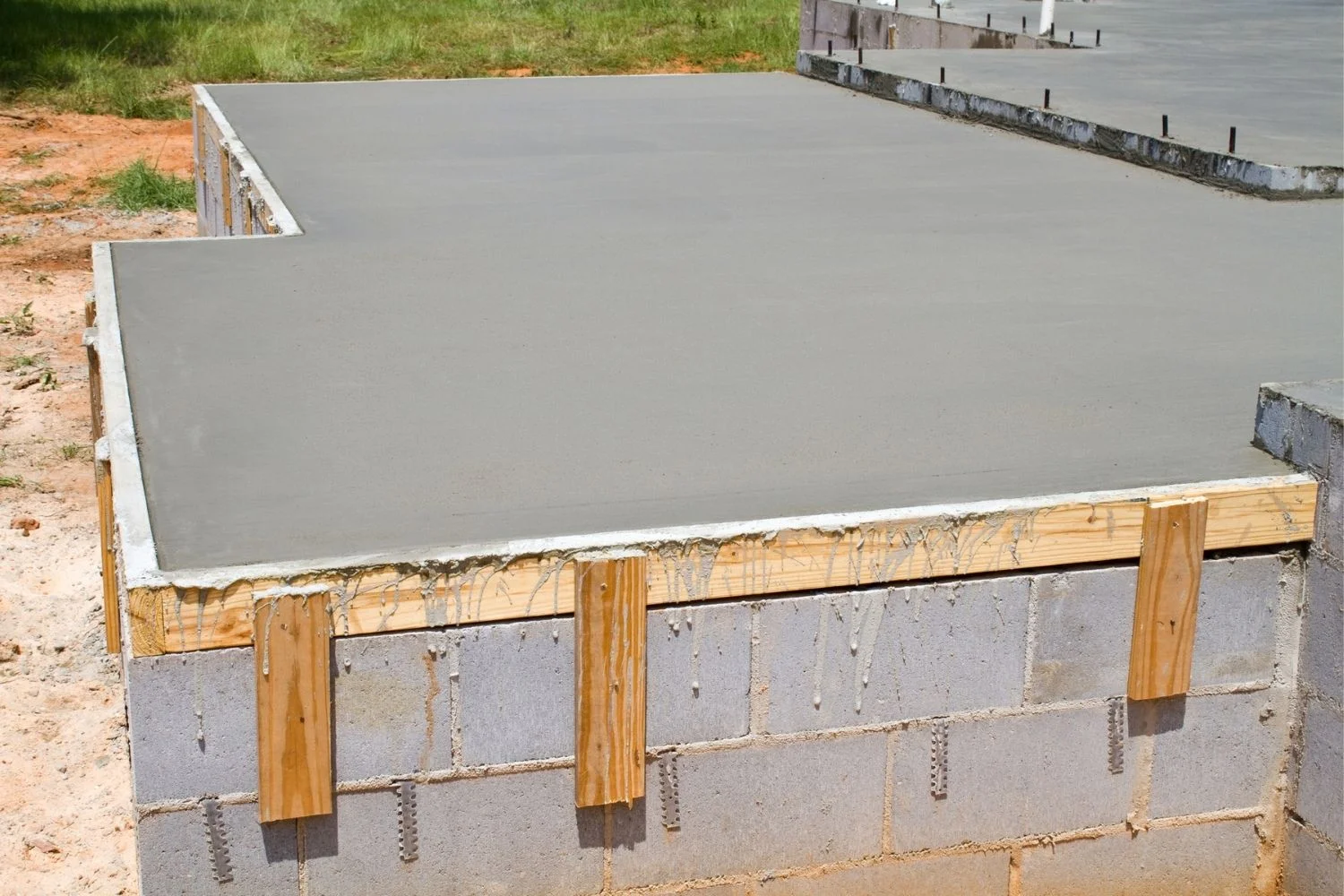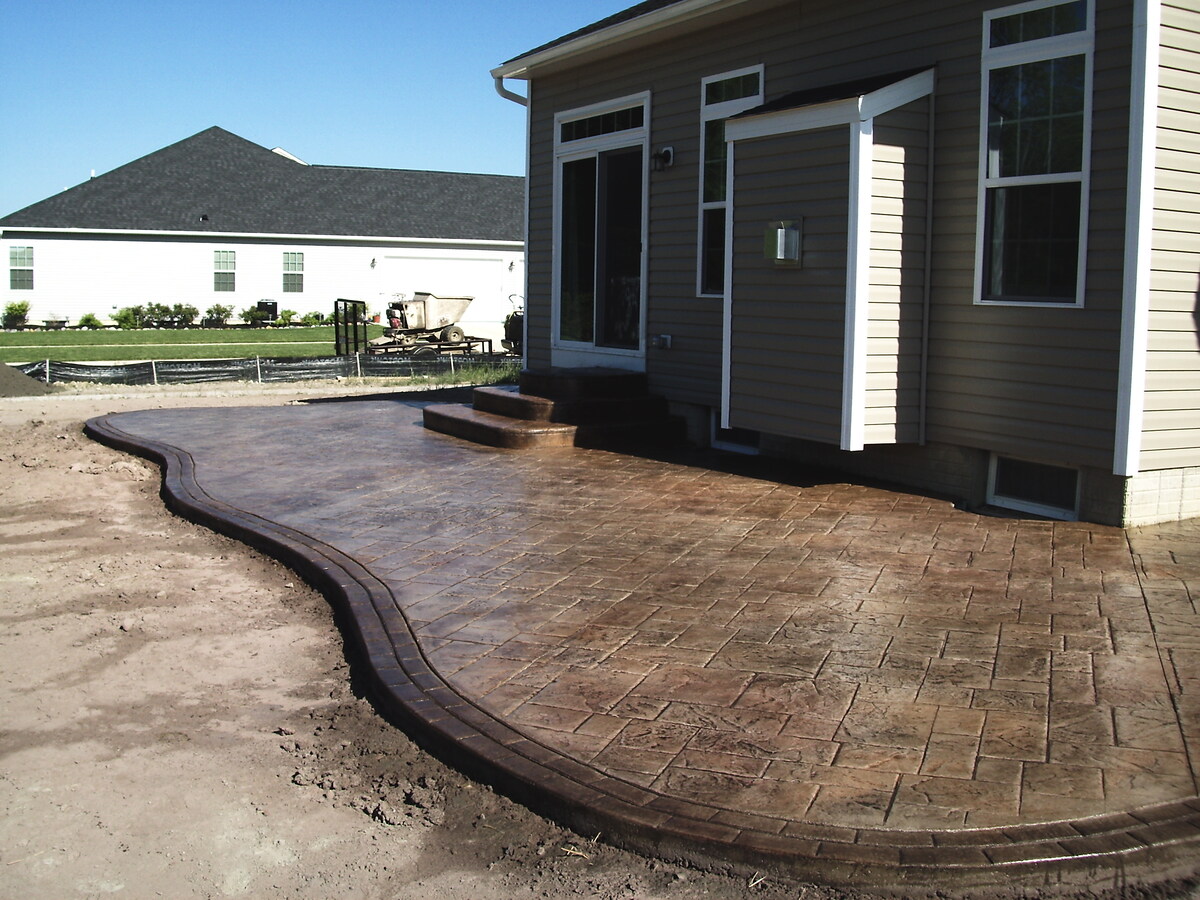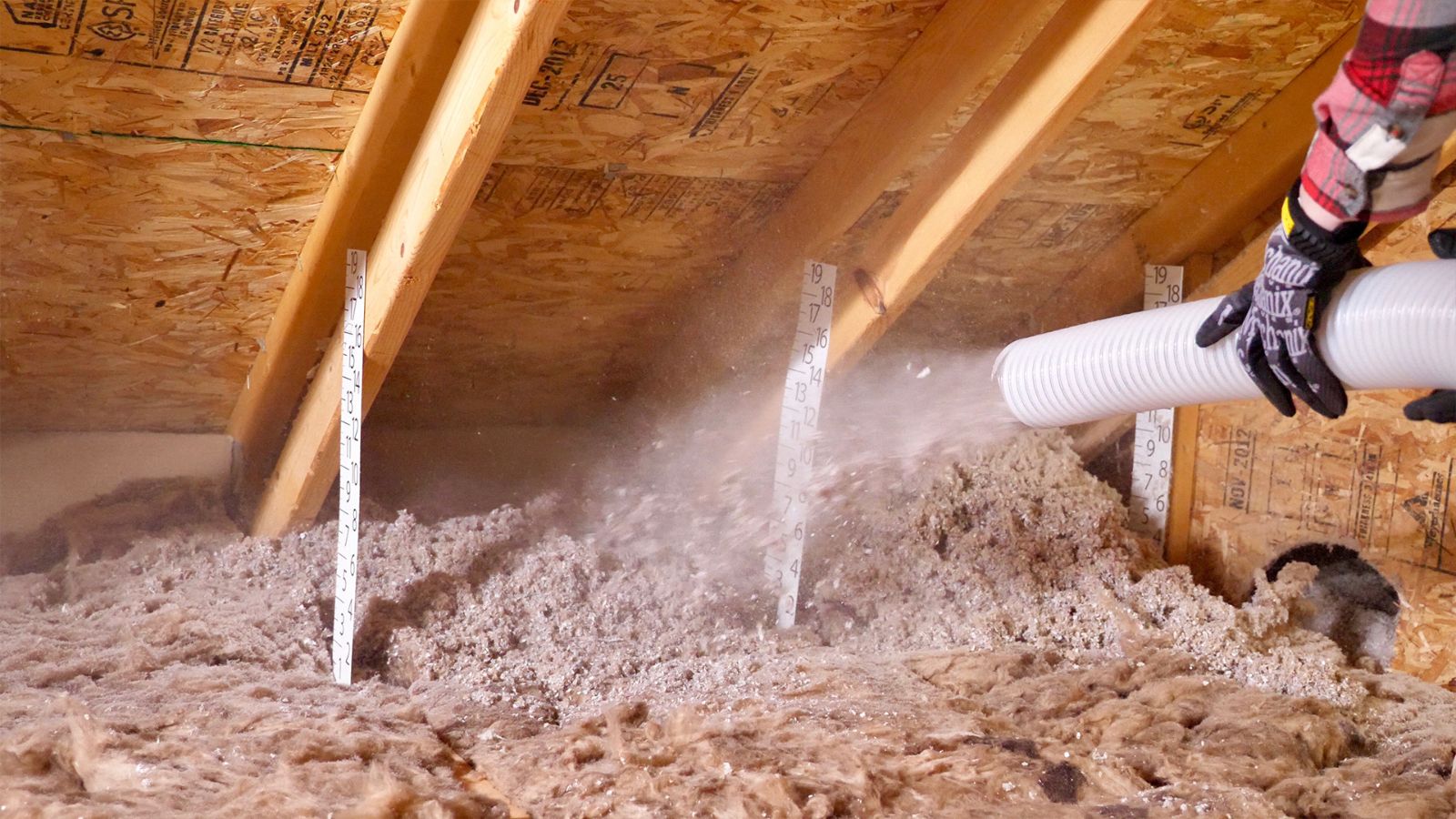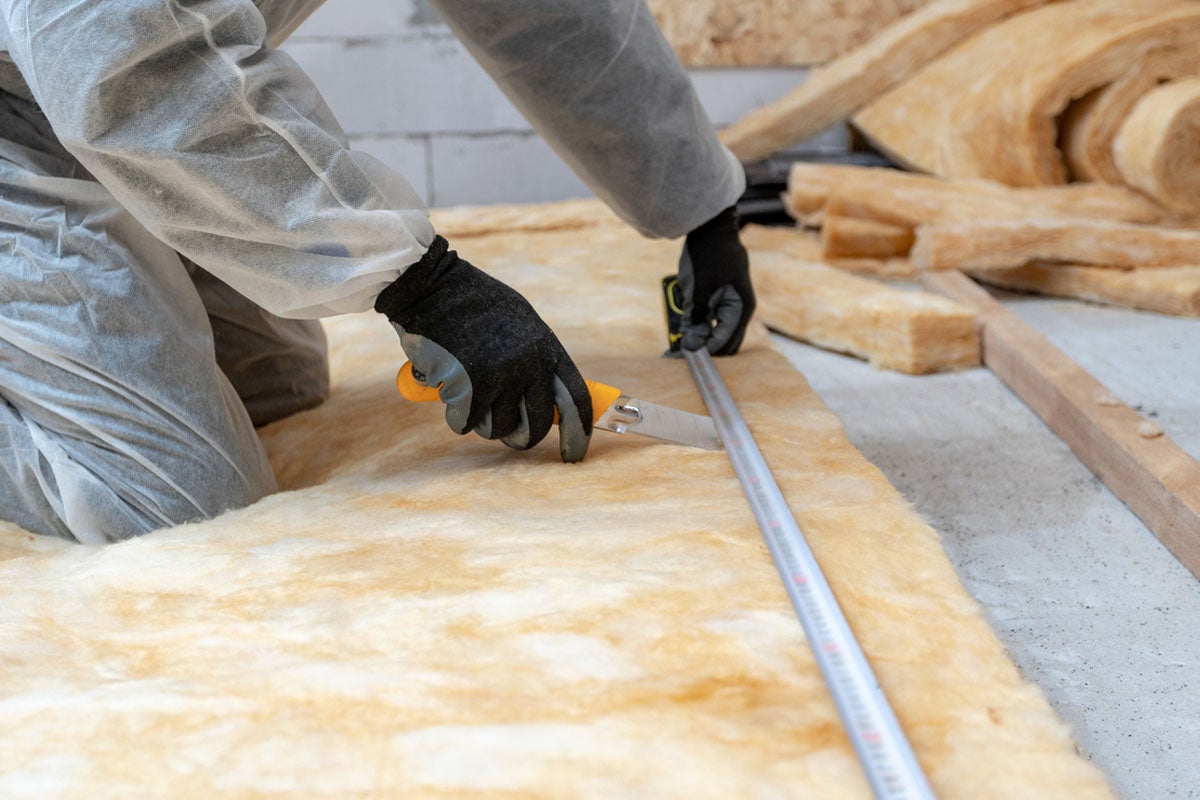Home>Furniture>Outdoor Furniture>How Much Concrete Do I Need For A Patio


Outdoor Furniture
How Much Concrete Do I Need For A Patio
Modified: March 7, 2024
Find out how much concrete you need for your patio and make sure you have enough outdoor furniture to enjoy the space.
(Many of the links in this article redirect to a specific reviewed product. Your purchase of these products through affiliate links helps to generate commission for Storables.com, at no extra cost. Learn more)
Introduction
Creating a patio is a fantastic way to expand your outdoor living space and enjoy the beauty of nature right in your own backyard. Whether you envision a cozy spot for morning coffee, a gathering place for friends and family, or a serene space for relaxation, a well-designed patio can transform your outdoor area into a functional and inviting oasis.
One key element in building a patio is determining how much concrete you need. Concrete serves as the foundation for your patio, providing stability and durability. Calculating the right amount of concrete is crucial to ensure proper installation and avoid costly mistakes.
In this article, we will guide you through the process of determining how much concrete you need for your patio. We will discuss the factors to consider, the measurements to take, and the calculations to make. By the end of this article, you will have the knowledge and confidence to accurately order the right amount of concrete for your patio project.
So, let’s dive in and explore the key factors to consider when determining how much concrete you need for a patio.
Key Takeaways:
- Calculating the right amount of concrete for your patio is crucial for a successful installation. Consider factors like patio size, concrete thickness, and climate to ensure accurate measurements.
- When ordering concrete, account for potential waste and order slightly more than needed. Find a reliable supplier, provide detailed information, and confirm delivery arrangements for a smooth and successful process.
Read more: How Much Gravel Do I Need For A Patio?
Factors to Consider
Before you start calculating the amount of concrete needed for your patio, there are several factors you need to consider. These factors will help you make accurate calculations and ensure a successful patio installation.
1. Size of the Patio:
The first factor to consider is the size of the patio. The larger the area, the more concrete you will need. Measure the length and width of the patio site to determine the total square footage.
2. Thickness of the Concrete:
The thickness of the concrete slab will also impact the amount of concrete required. Standard concrete thickness for a patio is typically 4 inches, but certain factors may influence the thickness. If the patio will bear heavy loads, such as for a hot tub or outdoor kitchen, you may need to increase the thickness to ensure structural integrity.
3. Slope and Grade:
Consider the slope and grade of your patio site. If the site is not level, you may need additional concrete to accommodate for the slope and ensure a consistent thickness across the entire surface.
Read more: How Much Sand Do I Need For A Patio
4. Shape and Design:
The shape and design of the patio can influence the amount of concrete needed. Irregular shapes or intricate designs may require more concrete due to the additional cuts and forms required.
5. Climate and Weather Conditions:
The climate and weather conditions in your area also play a role in determining the amount of concrete needed. In regions with freezing temperatures or high moisture levels, you may need to increase the thickness or reinforce the concrete to withstand potential damage.
By considering these factors, you can accurately assess the amount of concrete needed for your patio. Now, let’s move on to measuring the area to get precise dimensions for the calculations.
Measure the Area
Accurate measurements are crucial when determining the amount of concrete needed for your patio. To measure the area, you will need a measuring tape, stakes, and string.
1. Clear the Site:
Start by clearing the site of any obstacles such as rocks, plants, or debris. This will give you a clear and accurate measurement of the area.
Read more: How Much Concrete Do I Need For A Shed Base
2. Set the Boundaries:
Using stakes and string, mark the boundaries of your patio. This will create a clear and visible outline for measurement purposes.
3. Measure the Length and Width:
Use a measuring tape to measure the length and width of your patio area. Start from one corner and measure to the opposite corner, ensuring that the tape is straight and taut.
4. Account for Additional Space:
Consider whether you want to include any additional space for pathways, landscaping, or seating areas within your patio design. If so, measure and include these areas in your calculations.
5. Take Multiple Measurements:
To ensure accuracy, take multiple measurements at different points along the length and width of your patio. This will help account for any irregularities in the shape or ground level.
Once you have measured the length and width of your patio, you have the basic dimensions needed for calculating the volume of concrete required. In the next section, we will discuss how to determine the appropriate thickness for your patio slab.
Read more: How Much Does It Cost To Do A Concrete Patio
Determine the Depth
After measuring the length and width of your patio, the next step is to determine the appropriate depth or thickness of the concrete slab. The depth of the patio will depend on several factors, including its intended use, load-bearing requirements, and local building codes.
1. Consider the Patio’s Use:
Think about how you plan to use your patio. Will it be a space for lightweight furniture and occasional foot traffic, or will it accommodate heavy outdoor equipment and frequent gatherings? The purpose of the patio will help determine the necessary depth of the concrete slab.
2. Determine Load-bearing Requirements:
If you plan to place heavy objects like hot tubs, outdoor kitchens, or fire pits on your patio, you will need a thicker concrete slab to support the weight. Consult local building codes or a structural engineer to determine the recommended load-bearing requirements.
3. Consider Climate and Soil Conditions:
Take into account the climate and soil conditions in your area. Regions with extreme temperatures, freeze-thaw cycles, or expansive soils may require a thicker concrete slab to withstand potential damage.
Read more: How Much Slope On A Concrete Patio
4. Check Local Building Codes:
Check with your local building department to determine if there are any specific requirements or regulations for the depth of concrete slabs in your area. It’s important to comply with these codes to ensure the structural integrity and safety of your patio.
5. Consider Drainage Needs:
If your patio needs proper drainage, you may need to create a slight slope and adjust the depth accordingly. This will allow water to flow away from the patio surface and prevent pooling or damage to the concrete.
By considering these factors, you can determine the appropriate depth or thickness for your patio. Once you have determined the depth, you are ready to move on to calculating the volume of concrete needed.
Calculate the Volume
Calculating the volume of concrete needed for your patio involves multiplying the length, width, and depth of the space. This will give you the total volume of concrete required to cover the area.
1. Convert Units:
Ensure that all measurements are in the same units. If you measured the length and width in feet, the depth should also be expressed in feet. If your measurements are in different units, convert them to the same unit for accurate calculations.
Read more: How Many Bricks Do I Need For A Patio
2. Multiply Length and Width:
Multiply the length and width of your patio to determine the area in square feet. For example, if your patio is 10 feet long and 8 feet wide, the area would be 80 square feet (10 ft x 8 ft = 80 sq ft).
3. Multiply Area by Depth:
Multiply the area by the depth of the concrete slab to calculate the volume in cubic feet. For instance, if you decide on a depth of 4 inches (0.33 feet), the volume would be 26.4 cubic feet (80 sq ft x 0.33 ft = 26.4 cu ft).
4. Convert to Cubic Yards:
To order concrete, it is common to calculate the volume in cubic yards. To do this, divide the volume in cubic feet by 27 (since there are 27 cubic feet in a cubic yard). Using our previous example, the volume would be approximately 0.98 cubic yards (26.4 cu ft ÷ 27 = 0.98 cu yd).
Calculating the volume of concrete needed for your patio will give you a clear idea of the amount of material you should order. However, it’s important to account for potential waste during the installation process. Let’s discuss how to adjust for waste in the next section.
Adjust for Waste
When ordering concrete for your patio, it’s important to account for potential waste that may occur during the installation process. Factors such as uneven subgrade, spills, overpouring, and uneven mixing can lead to a small percentage of concrete being unused or unusable. To ensure you have enough concrete to complete your project, it’s recommended to adjust for waste.
Read more: How Many Patio Blocks Do I Need
1. Consider Waste Percentage:
The amount of waste can vary depending on the complexity of the project and the experience of the installers. It’s generally a good idea to include a waste percentage of 5-10% to account for any unforeseen issues or mistakes. This will help ensure that you have enough concrete to complete your patio without having to order additional materials later.
2. Recalculate the Volume:
To adjust for waste, recalculate the volume of concrete needed by adding the waste percentage to the previous calculation. Let’s say your initial volume calculation was 0.98 cubic yards. If you decide to include a 5% waste allowance, you would multiply the volume by 1.05 (0.98 cu yd x 1.05 = 1.03 cu yd). This adjusted volume accounts for the waste factor.
It’s always better to have a little extra concrete than to run out during the installation process. Keep in mind that concrete companies may not be able to provide exact quantities, so rounding up to the nearest quarter or half yard when ordering can ensure you have enough material on hand.
With the adjusted volume accounting for waste, you are now ready to proceed with ordering the concrete for your patio. Let’s discuss the final steps in the next section.
Ordering the Concrete
When it comes to ordering concrete for your patio, it’s important to find a reliable supplier who can deliver the right type and quantity of concrete to your project site. Here are the steps to follow when ordering the concrete:
1. Find a Concrete Supplier:
Research local concrete suppliers in your area and choose one with a good reputation and a track record of reliable service. Look for suppliers who specialize in delivering concrete for residential projects, as they are more likely to have experience with patio installations.
Read more: How Much To Remove A Concrete Patio
2. Provide Detailed Information:
Contact the supplier and provide them with detailed information about your patio project. This includes the dimensions, depth, and any special requirements or considerations. Be sure to mention if you have adjusted for waste in your calculations.
3. Confirm Delivery Date and Time:
Work with the supplier to schedule a delivery date and time that aligns with your project timeline. Consider any potential disruptions or limitations that may affect the delivery, such as narrow access points or restrictions in your neighborhood.
4. Review Pricing and Payment Terms:
Discuss the pricing and payment terms with the supplier. Understand the cost per cubic yard of concrete and any additional fees or charges. Clarify the payment method and determine if a deposit is required before the delivery.
5. Place the Order:
Once you have all the necessary information and arrangements, place the order for the concrete. Confirm the quantity, delivery address, and any special instructions to ensure a smooth and accurate delivery.
Remember, it’s always better to order slightly more concrete than you think you will need, rather than risking running out during the installation. Having some extra material allows for adjustments, repairs, or future additions to your patio if needed.
With the concrete ordered, you are now ready to start your patio installation and bring your outdoor living space to life. Enjoy the process and the satisfaction of creating a beautiful and functional patio right in your own backyard!
Conclusion
Designing and creating a patio can greatly enhance your outdoor living space, providing you with a cozy spot to relax, entertain, and enjoy the beauty of nature. Ensuring that you have the right amount of concrete for your patio project is essential to its success.
In this article, we have explored the factors to consider when determining how much concrete you need for a patio. From measuring the area and determining the depth to calculating the volume and adjusting for waste, each step is crucial in accurately ordering the right amount of concrete.
Remember to consider the size of the patio, the thickness of the concrete, the shape and design, as well as the climate and weather conditions in your area. Taking accurate measurements and accounting for potential waste during the installation process are also important factors.
Once you have determined the volume of concrete needed, it’s time to find a reliable supplier and place your order. Providing detailed information about your project, confirming delivery arrangements, and reviewing pricing and payment terms are essential steps in ensuring a smooth and successful delivery process.
By following these guidelines, you can confidently order the right amount of concrete for your patio, avoiding waste and delays, and ensuring a strong and durable foundation for your outdoor space.
Now that you have the knowledge and understanding of how to calculate and order concrete for your patio, it’s time to put your plans into action. Enjoy the process of creating your ideal patio and make cherished memories in your transformed outdoor oasis.
Happy patio building!
Frequently Asked Questions about How Much Concrete Do I Need For A Patio
Was this page helpful?
At Storables.com, we guarantee accurate and reliable information. Our content, validated by Expert Board Contributors, is crafted following stringent Editorial Policies. We're committed to providing you with well-researched, expert-backed insights for all your informational needs.








0 thoughts on “How Much Concrete Do I Need For A Patio”